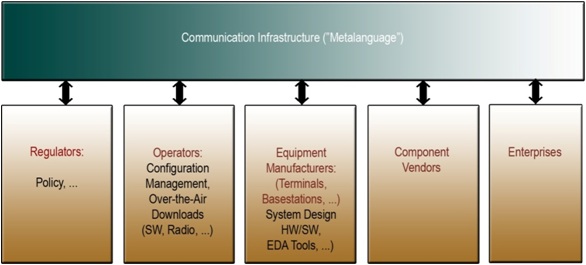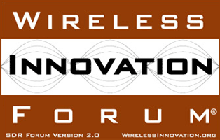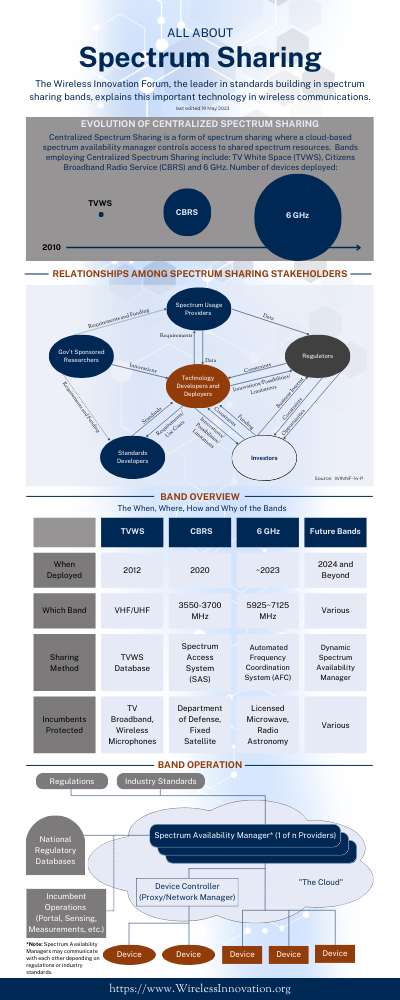Enabling Architectures Supporting Cognitive Radio and Dynamic Spectrum Access
Support for cognitive radio and dynamic spectrum access requires a number of enabling technologies that are under development by the members of the Wireless Innovation Forum:
- Information Process Architecture: Understanding the current state of complex information systems and their associated communications subsystems to determine how to enhance them from a process perspective, and analyze them for opportunities to interact with other systems is a key problem. An information process architecture solves this problem by providing a top-down model and a series of tools for depicting the structure of complex systems to aid in defining, designing and selecting relevant cognitive radio processes and to facilitate an improved understanding of the structure and relationships between systems that span user domains.
- Modeling Language: Flexible and efficient communication protocols are required between advanced radio systems and subsystems to support next generation features such as vertical and horizontal mobility, spectrum awareness, dynamic spectrum adaption, waveform optimization, feature exchanges, and advanced applications. A modeling language built on detailed use cases, and defining the signalling plan, requirements and technical analysis of the information exchanges provides the basis for developing specifications and standards supporting these capabilities.

A modeling language, or meta-language, expressed in a formal declarative language that is machine readable defines the communications infrastructure of the cognitive radio [source]
- Radio Environment Map: Operation of a cognitive engine requires data and meta-data defining the spectral environment that a terminal is operating in at a given moment in time. Referred to as the radio environment map, this data can include information on spectrum economic transactions, dropouts, handovers, available networks, and services. Data contained within the map is derived, in part, by capturing and synthesizing measurements from many radios, and may be stored in a database that can be accessed remotely by the cognitive engine. Requirements for a database structure enabling this access including standardized database structures, data formats and functionality must be defined to support the flexibility necessary to accommodate current and future cognitive radio spectrum applications, such as mobility, spectrum economic transactions, dropouts, handovers, available networks, and services.
- Test and Measurement: Cognitive radios pose unique test challenges in quantifying the performance of critical functions such as spectrum sensing, interference avoidance, database performance, and adherence to policy. Test methodologies supporting these challenges must be developed must consider a range of hardware platforms, protocols, algorithms, use cases, and spectrum stakeholder requirements. Test equipment functionality and performance, test interfaces and test modes must also be taken into account.
Information on these and other projects can be found here
Save
|




